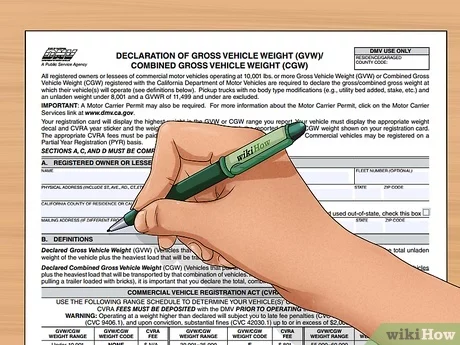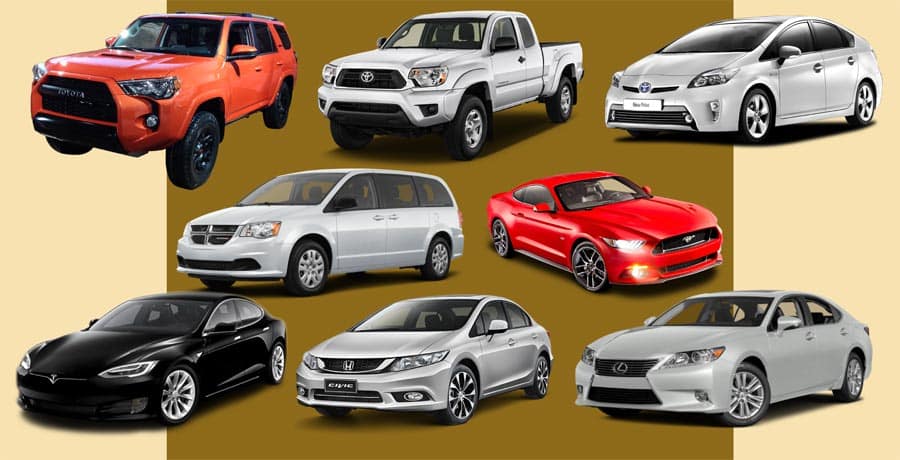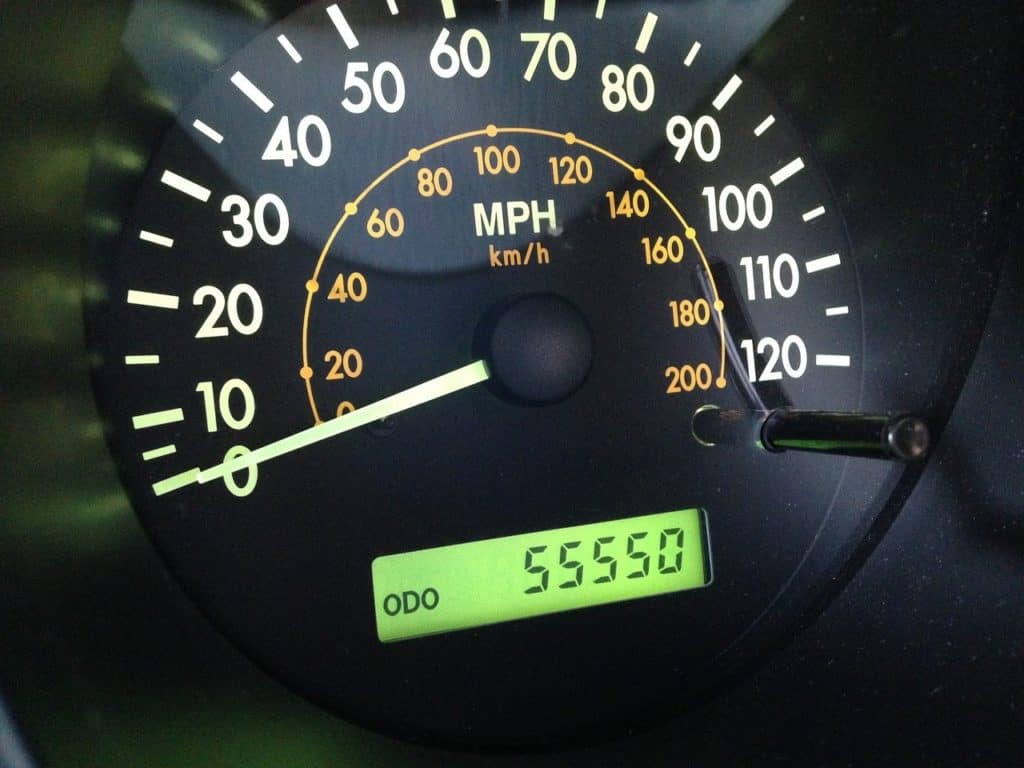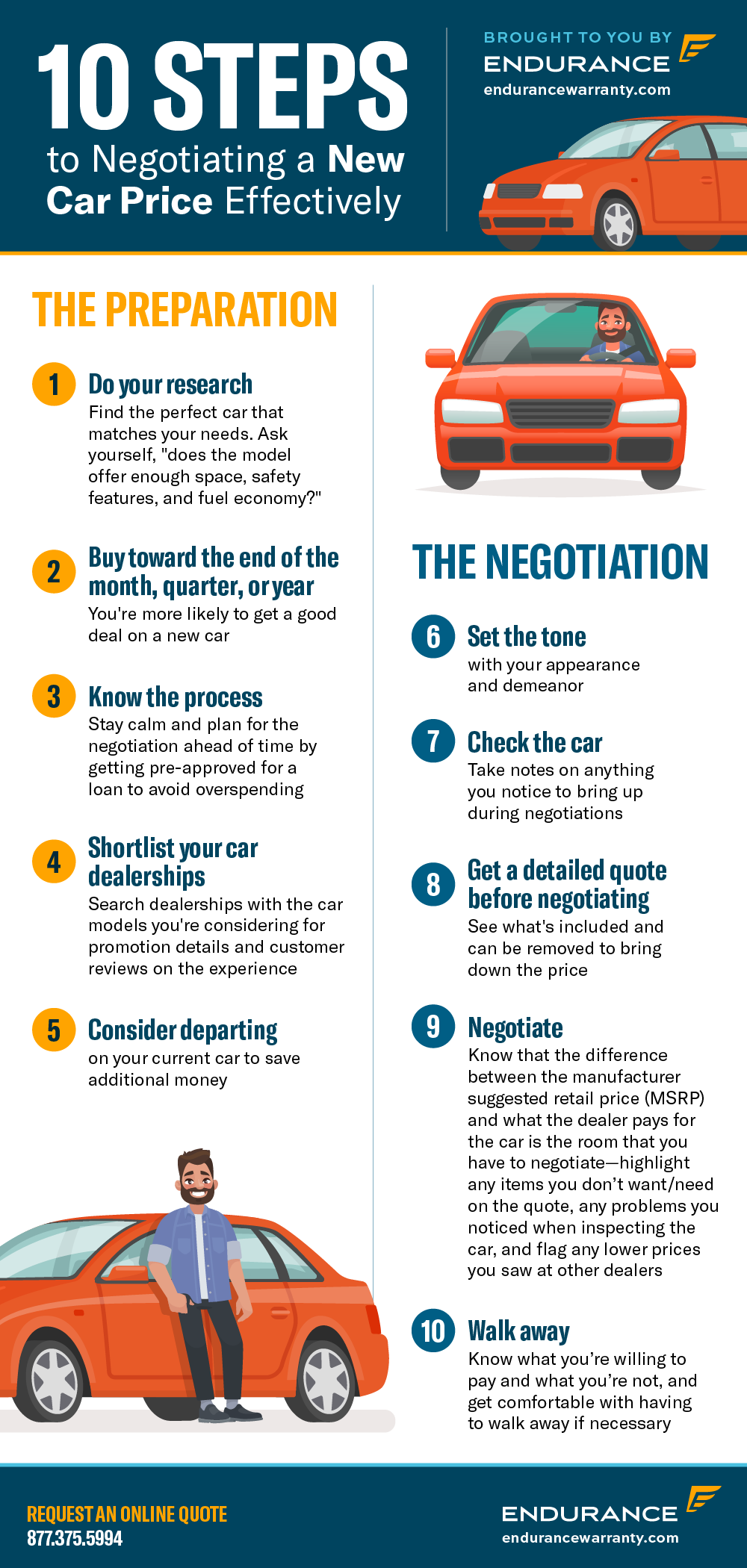What to Do After Buying a Used Car
After buying a used car, immediately transfer the title and register the vehicle. Ensure you obtain insurance coverage before driving.
Acquiring a pre-owned vehicle is a popular choice for many, offering the potential for cost savings and a reduced rate of depreciation. Embarking on the journey of buying a used car can be as exciting as it is daunting. Once the keys are in your hand, it’s vital to take the necessary steps to make the vehicle legally and safely yours.
The initial post-purchase actions set the tone for your ownership experience. These early stages require attention to paperwork, legal requirements, and the mechanical health of your new car. By focusing on these critical first steps, you secure a smoother transition into your role as the car’s latest owner, guaranteeing peace of mind as you hit the road in your newly acquired ride.
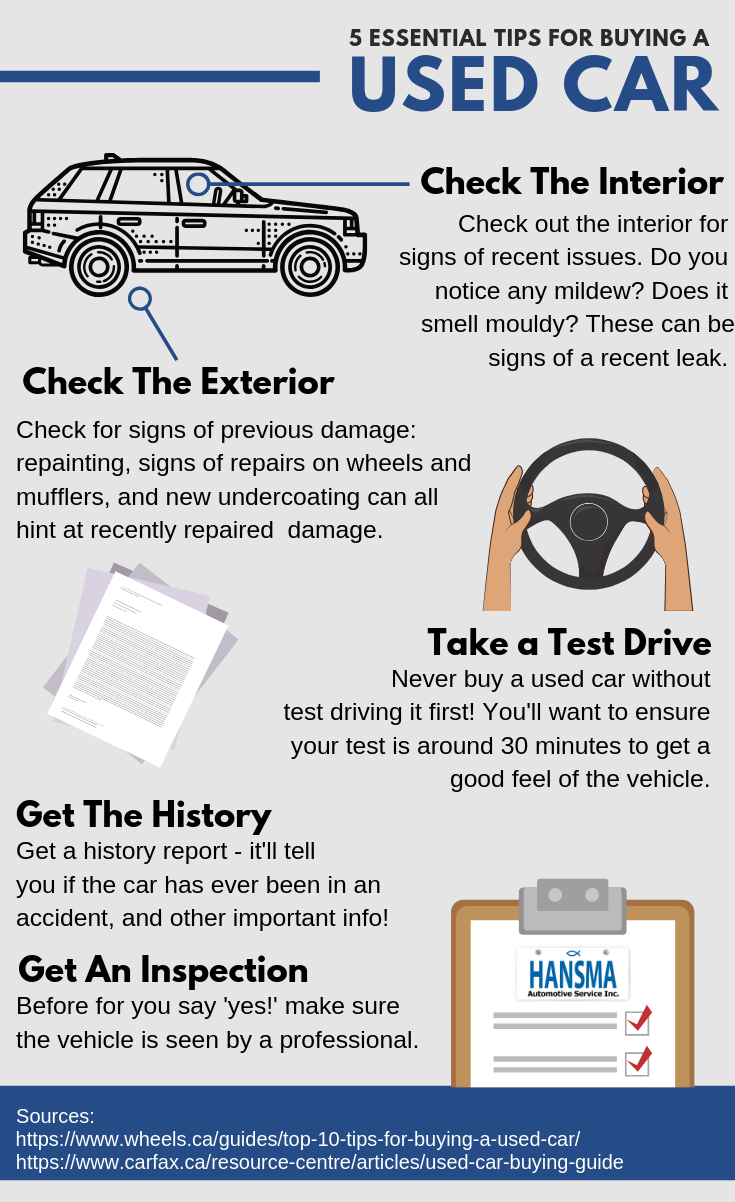
Credit: www.hansmaautomotive.com
Initial Steps With Your Used Car
Congratulations on the new set of wheels! Buying a used car brings excitement and responsibility. Before hitting the road, tackle these first steps to ensure a smooth drive ahead.
Check Vehicle Documentation
Review all paperwork carefully. This is crucial. Start with the vehicle’s title to confirm it’s clean and in the seller’s name. Next, check the registration to ensure it’s current. Don’t forget to look at the Vehicle History Report. It reveals past accidents and maintenance history. Grab a maintenance record, if available, to understand its care routine.
- Title – Make sure it’s in the seller’s name and has no liens.
- Registration – Verify that it is up-to-date.
- Vehicle History Report – Check for past incidents and services.
- Maintenance Record – Assess past upkeep of the vehicle.
Secure Car Insurance
Before driving, get the right insurance. Protecting your car is not just smart; it’s legal. Start by shopping around for the best rates. Consider comprehensive coverage for all-round protection.
| Insurance Type | What It Covers |
|---|---|
| Liability | Injury and damage you cause to others |
| Collision | Repairs to your car from a crash |
| Comprehensive | Non-collision events like theft or weather damage |
Remember to carry proof of insurance with you at all times. Now, with these initial steps completed, your new-to-you car is ready for many adventures!
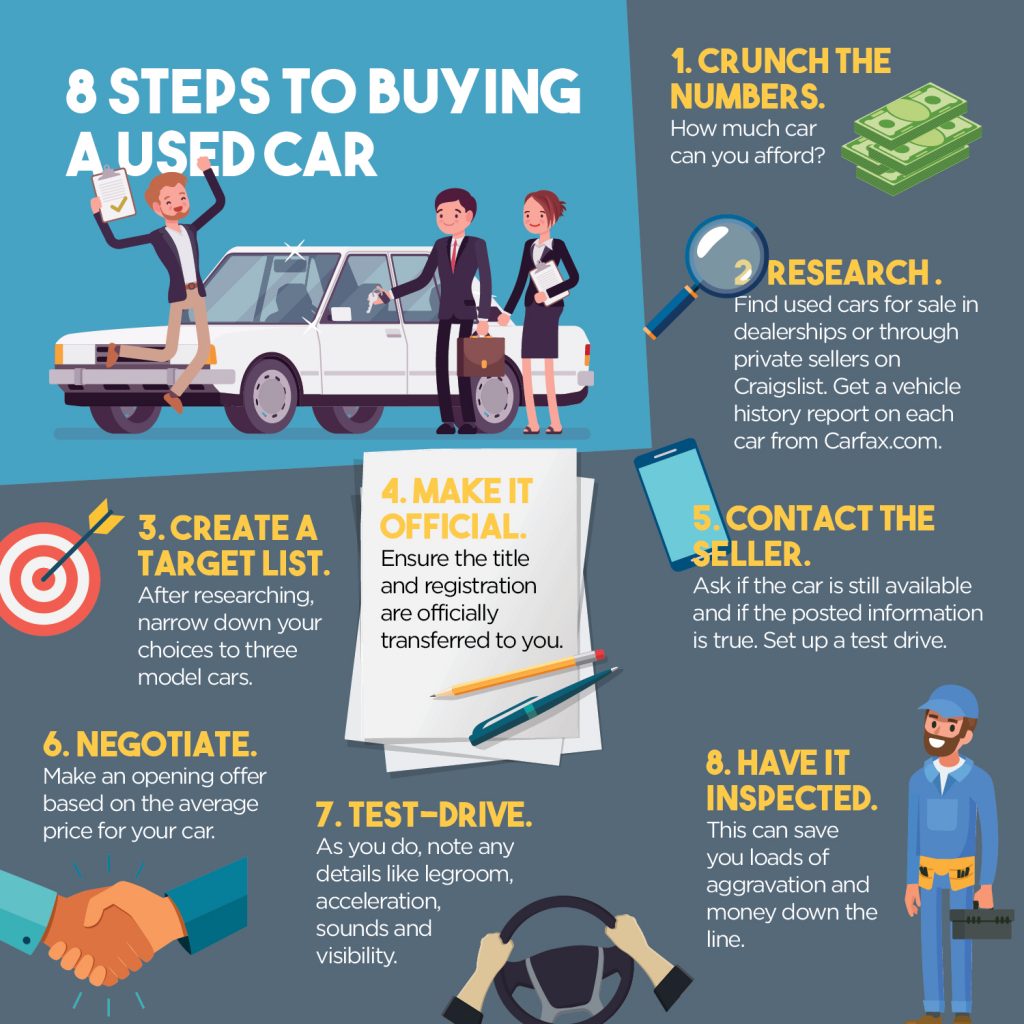
Credit: myzing.com
Maintenance Check-up
Congratulations on your new ride! Even though it’s new to you, a used car needs a little TLC to ensure it runs smoothly. A Maintenance Check-up is the best start to a long and healthy road life for your vehicle. Let’s dive into what this check-up involves.
Schedule A Professional Inspection
Peace of mind comes with a professional inspection. It’s essential for uncovering hidden issues. Certified mechanics have a keen eye for details you might miss. They check the car’s health and safety features. Make an inspection appointment soon after your purchase.
- Brake system performance
- Tire condition and alignment
- Engine and transmission
- Electrical systems
Change Oils And Fluids
Fresh oil and fluids are the lifeline of any vehicle. They ensure everything runs smoothly and efficiently. Don’t rely on past maintenance records. Get new oil, coolant, brake, transmission, and power steering fluids. Here’s a list of fluids to check:
| Fluid Type | Purpose | Change Frequency |
|---|---|---|
| Engine Oil | Lubricates engine | 3,000-5,000 miles |
| Coolant | Keeps engine cool | 24,000-36,000 miles |
| Brake Fluid | Operates brake system | Check every oil change |
| Transmission Fluid | Smooths gear shifts | 30,000-60,000 miles |
| Power Steering Fluid | Helps steering performance | Check every oil change |
Personalizing Your Ride
Congratulations on your recent car purchase! Now, let’s make that car truly yours with some personal touches. Personalizing your ride brings out your unique style and makes every journey more enjoyable. It’s time to dive into the exciting world of custom accessories and spruce-up strategies.
Adding Custom Accessories
Transform your car with accessories that reflect your personality. Here’s how:
- Seat covers: Protect your seats and add a splash of color.
- Steering wheel cover: Grip with comfort and style.
- Floor mats: Keep the car clean with custom mats.
| Accessory | Benefits |
|---|---|
| Decals | Show off your interests with cool designs. |
| LED lights | Create an ambient mood with subtle lighting. |
Detailing And Cleaning
A clean car feels like new. Here’s your detailing checklist:
- Wash the exterior: Use soap and water for a shining look.
- Vacuum the interior: Reach every nook for a dust-free cabin.
- Wipe surfaces: Use cleaners for a sparkling dashboard.
Remember: regular detailing keeps your car in top condition.
:max_bytes(150000):strip_icc()/7-mistakes-avoid-when-buying-used-car.asp-V1-dbc23496b5164854a581f89b4683a5b5.jpg)
Credit: www.investopedia.com
Legal And Registration Tasks
Embarking on the journey of a used car owner is exciting. But there’s paperwork to tackle. The tasks help you drive legally and with peace of mind. Let’s go over the essential steps for Legal and Registration Tasks.
Transfer The Title
Once you have your new car, you must transfer the title to your name. It proves you own the car. Here’s what you do:
- Get the signed title from the seller.
- Visit your local DMV with your ID and proof of purchase.
- Fill out the required paperwork.
- Pay the title transfer fee.
Update Registration And Plates
Updating your registration and plates is a must. It keeps you legal on the road. Follow these steps:
- Check your state’s DMV website for registration details.
- Gather required documents like insurance and inspection.
- Complete the registration form.
- Submit the form and pay the fees at the DMV.
- Receive new plates or a sticker for your current plate.
Protecting Your Investment
Once you’ve purchased a pre-owned car, it’s essential to focus on ‘Protecting Your Investment’. This phase includes securing your car’s longevity and performance. Smart owners know that this initial step is just the beginning. To get the most out of your new ride and ensure it runs smoothly for years, you should consider extended warranties and a consistent maintenance schedule.
Extended Warranty Options
Adding an extended warranty can save you from costly repairs down the road. It can cover major breakdowns and provide peace of mind. Not all warranties are the same, so explore these options:
- Powertrain Warranty: Covers engine, transmission, and drivetrain components.
- Bumper-to-Bumper Warranty: Offers comprehensive coverage including electrical and technology systems.
- Corrosion Warranty: Protects against rust-through issues.
Compare terms and choose a warranty that balances cost with protection. Always read the fine print!
Regular Maintenance Plan
Establishing a regular maintenance plan is critical for your car’s health. Stick to these upkeep basics:
| Service | Interval |
|---|---|
| Oil Change | Every 3,000-5,000 miles |
| Tire Rotation | Every 5,000-7,500 miles |
| Brake Inspection | Every 10,000-15,000 miles |
Mark your calendar for regular check-ups. Your car’s manual can offer a more personalized schedule.
Remember, consistent care equals fewer surprises. By following these steps, you ensure your used car remains a reliable companion for your everyday adventures.
Road Readiness
Securing road readiness for a used car demands attention to detail. Get started on the essentials immediately after purchase. Transform your investment into a reliable companion with careful preparation.
Emergency Kit Assembly
No journey is complete without a well-stocked emergency kit. Take the time to build one or refresh the kit already in the car. A proper kit includes:
- First Aid Supplies: Bandages, antiseptic wipes, and pain relievers.
- Tools: Screwdrivers, pliers, and a multi-tool.
- Safety Gear: Reflective triangles, a flashlight, and gloves.
- Seasonal Items: Ice scraper, jumper cables, and a blanket.
Familiarize Yourself With The Owner’s Manual
Understanding your car’s manual keeps you informed. It’s a treasure trove of vital information. Under the hood, there’s plenty to discover:
| Section | Details |
|---|---|
| Maintenance: | Oil change frequency, tire pressure guidelines. |
| Controls: | Dashboard indicators and what they mean. |
| Specifications: | Fuel type, capacity, and optimum performance settings. |
Becoming familiar with the manual ensures you’re prepared. It boosts your confidence on the road. It spells out the car’s needs in clear language, making it your go-to guide for questions and solutions.
Frequently Asked Questions For What To Do After Buying A Used Car
What Checks After Buying A Used Car?
After purchasing a used car, ensure to check the fluids, including oil and coolant levels. Verify the tire pressure and tread depth. Inspect the lights, wipers, and signals for proper functionality. Review your documents to ensure the title transfer is complete and accurate.
How To Transfer Used Car Ownership?
To transfer ownership of a used car, acquire the title from the previous owner with their signature. Fill out the transfer section, then submit it to the DMV. Don’t forget to provide a bill of sale and proof of insurance, and pay any necessary transfer fees.
What Insurance To Get For Used Car?
For a used car, consider getting comprehensive and collision insurance along with liability coverage. This provides protection against various incidents and accidents. Check for existing policies from the previous owner to avoid overlapping coverage, and shop around for the best rates.
When To Service Newly Bought Used Car?
Service your newly bought used car immediately if the service history is unclear. Otherwise, follow the manufacturer’s recommended service schedule based on mileage or time. This helps ensure the car’s longevity and reliability.
Conclusion
Securing a pre-owned vehicle is just the beginning. Take time to ensure your ride’s longevity and safety with proper checks and documentation. Adhering to these pivotal steps creates peace of mind for your journeys ahead. Drive confidently, knowing your used car is at its best.
Your automotive adventure awaits!

